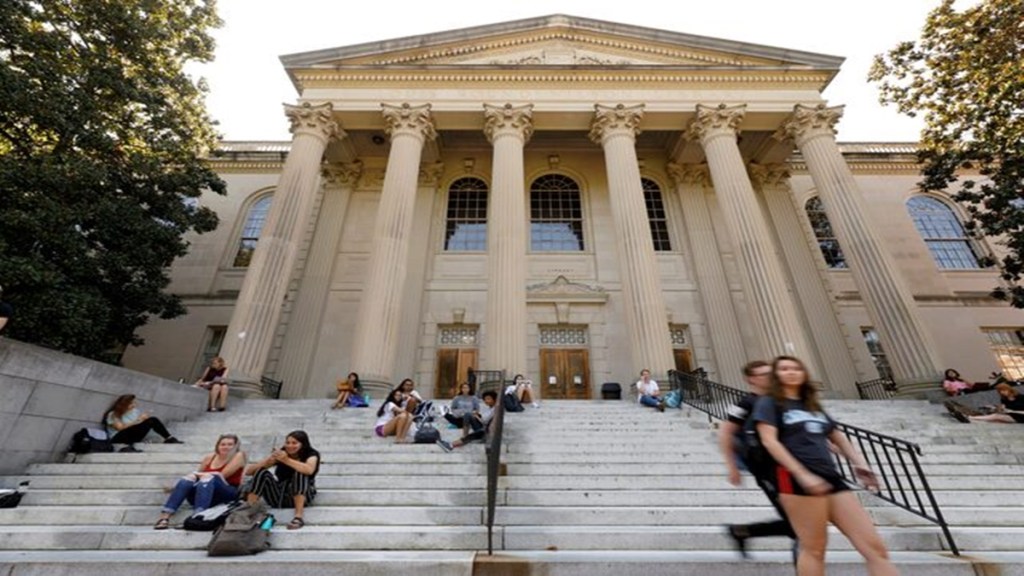By PK Agarwal
Amidst the policy restrictions, the housing crisis, and the job crunch in traditional study-abroad destinations, the U.S. continues to stand strong as a preferred choice for international students.
America has one of the highest numbers of Indian students, right after Canada, as reflected in recent reports released by the Ministry of External Affairs of India. Showcasing a steady rise, the USA presently hosts around 337,630 Indian students as compared to 2021 with only 96,000 students.
The USA’s appeal as a study destination lies not only in its prestigious universities but also in its dynamic job market and vibrant culture.
Silicon Valley, in particular, offers unparalleled opportunities for young professionals to engage in innovative projects and build essential networks, attracting skilled talent. Given the enormous contributions of the Indian diaspora to the American economy, the country deeply values Indian students.
This is evidenced by the recent announcement of the U.S. Mission to India which has opened an additional 250,000 visa appointments for Indian travelers, including tourists, skilled workers, and students, easing the well-documented backlog for study visa applicants.
To enable Indian students to access these opportunities let us explore the various visa pathways available to them.
The F-1 visa, being one such key pathway, allows individuals to enter the U.S. as full-time students. It not only facilitates academic pursuits but also provides access to the Optional Practical Training (OPT) program.
The OPT enables international students to gain valuable work experience after completing their studies, allowing graduates to work up to a year in the U.S. and up to three years for graduates in the STEM fields.
The J-1 visa, as another pathway, allows individuals to enter the U.S to participate in exchange visitor programs in the United States. This could be in a variety of ways including with college/universities or other exchange programs.
These students must receive funding directly or indirectly from the U.S. government, the government of their home country, an international organization of which the United States is a member by treaty or statute, or supported substantially by funding from any source other than personal or family funds. Employment opportunities are available, although only on a part-time basis making this option another attractive option to eligible students.
The M-1 visa, however, is a nonimmigrant visa for students enrolled in nonacademic or vocational programs in the United States, such as flight schools, technical schools, and culinary schools. Unlike the F-1 visa, the M-1 visa does not provide students the full one to three years of employment opportunities to gain working experience in the U.S., making it a rarely used option.
Short-term courses could be a valuable alternative for students aspiring to qualify for the OPT program. These programs offer specialized training that aligns with industry demands, equipping students with practical skills and knowledge essential for surviving in the cutthroat industry.
Fields such as Data Science, Artificial Intelligence (AI), and Business Administration are particularly relevant, as they are high-demand fields with significant job opportunities and can help students gain valuable skills and knowledge to secure OPT positions.
The work experience gained through OPT allows students to practice what they have learned and develop professional connections that can lead to future employment. The supportive start-up ecosystem in Silicon Valley further enriches this experience, allowing students to engage with industry leaders and innovators. Networking plays a crucial role in this journey, encouraging students to leverage opportunities such as meetups, industry forums, and alumni connections.
To apply for the H1-B visa, particularly for students aspiring to transition from OPT, it is of utmost importance that they understand the process.
The H-1B visa is a non-immigrant visa that allows U.S. companies to employ foreign workers in specialty occupations, including many roles in technology and engineering. To qualify for an H-1B visa, students must secure a job offer from a sponsoring employer, which can be facilitated by the experience gained during their OPT period, enabling them to transition to permanent residency possibly.
The F-1 visa and subsequent OPT present valuable pathways for Indian students to kick-start their careers in Silicon Valley. By pursuing short-term programs that align with their career goals, students can acquire essential skills, gain practical experience, and build the networks necessary to thrive in this competitive environment.
Silicon Valley not only represents a destination for academic achievement but also serves as a launchpad for professional growth, paving the way for aspiring professionals to achieve their dreams in the tech capital of the world.
(Author is Dean, UC Santa Cruz Silicon Valley Professional Education)
Disclaimer: Views, recommendations, and opinions expressed are personal and do not reflect the official position or policy of FinancialExpress.com. Readers are advised to consult qualified financial advisors before making any investment decision. Reproducing this content without permission is prohibited.


